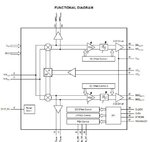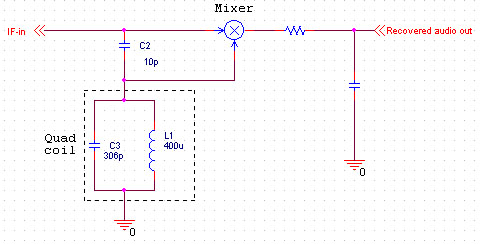richas
Junior Member level 3
I am having trouble understanding quadrature demodulation. I understand that the RF signal is split and mixed with a LO and the LO shifted by 90 degrees. The signals are low pass filtered and presented as I and Q outputs where the Q output is the phase shifted output.
As related to a binary signal (BFSK) it is unclear to me how the baseband data presents it self at the IQ outputs of the demodulator.
Rich
As related to a binary signal (BFSK) it is unclear to me how the baseband data presents it self at the IQ outputs of the demodulator.
Rich

